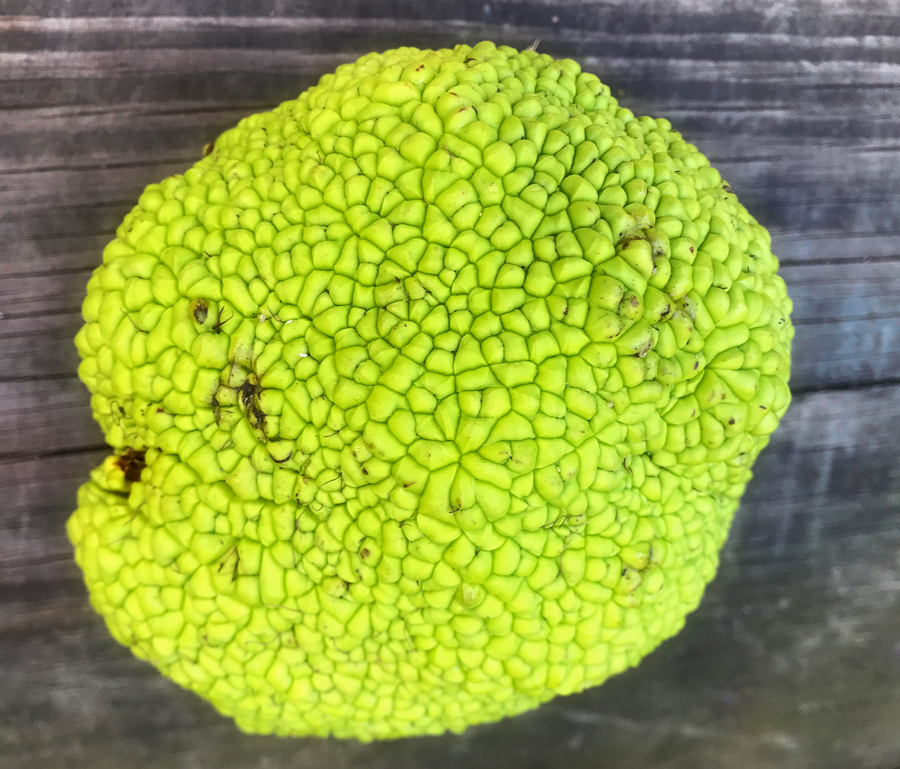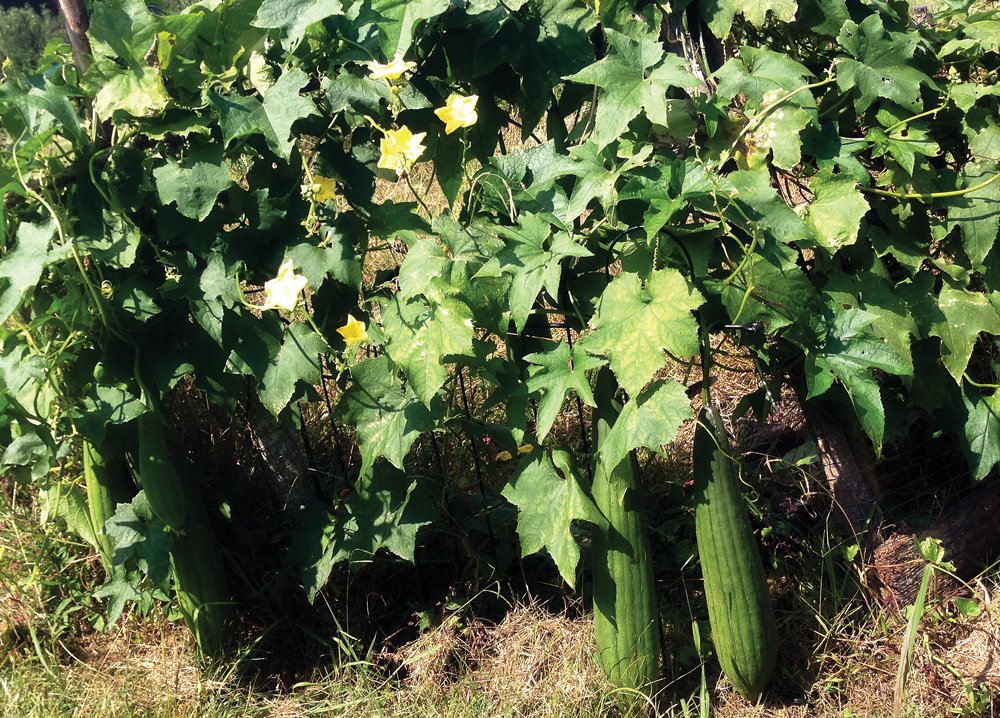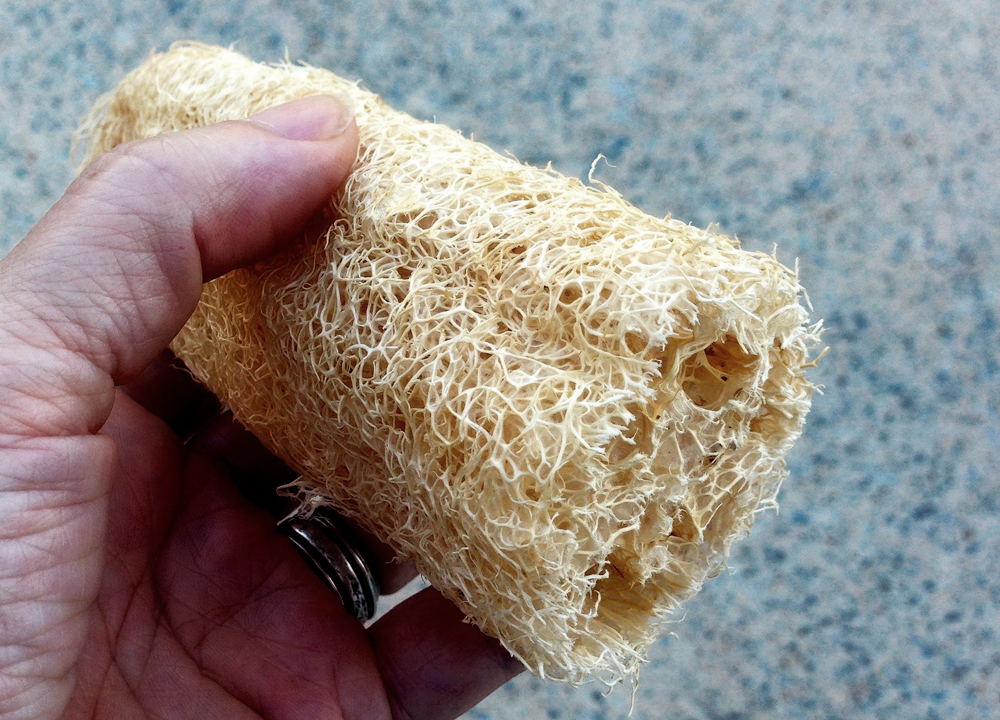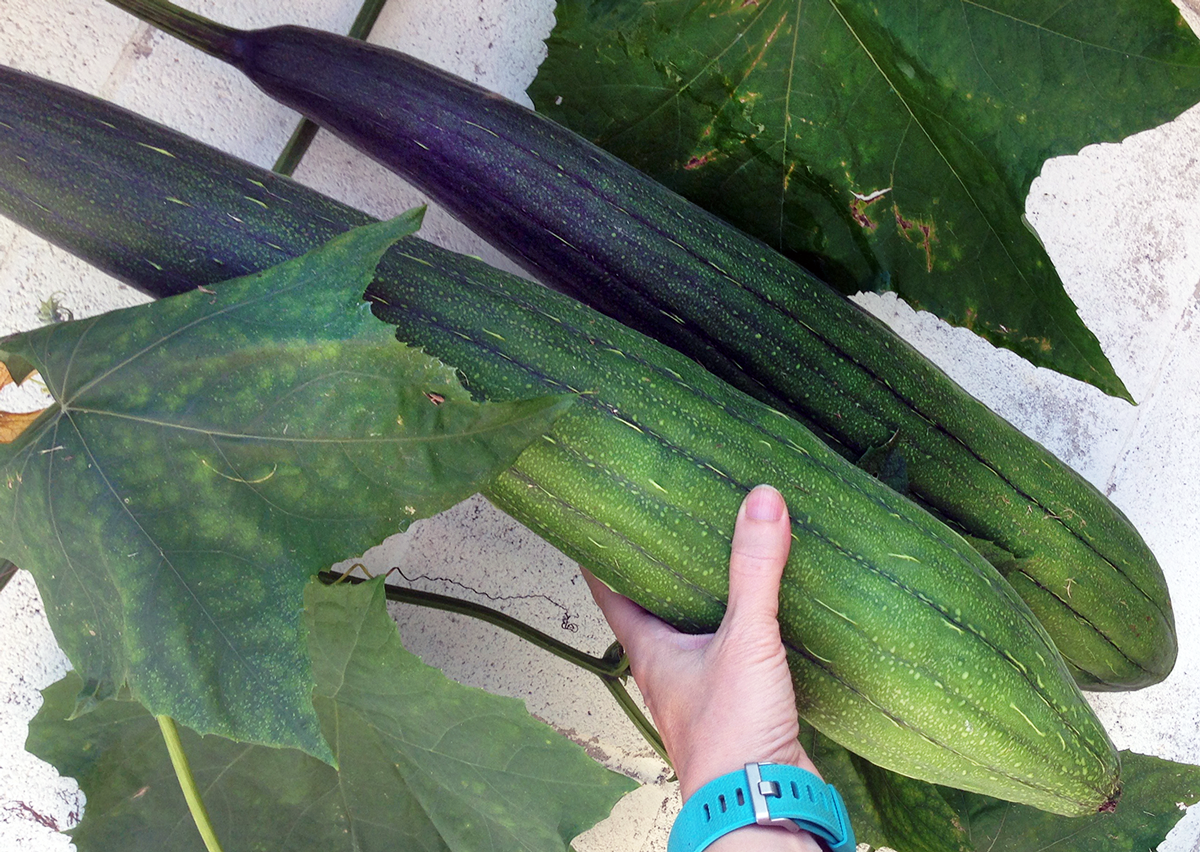My sister texted me earlier asking if I knew what this was…
It is an osage orange, also called hedge apple. The fruit, named for its citrusy, orange-like fragrance is inedible by humans. She lives in Illinois and I believe they are found more in the midwest. I’m not completely sure but I’ve never seen them in New England or here in Tennessee.
Anyway, this little fruit led to me discovering why I might have had such a disappointing luffa (or loofah) crop last summer—or rather no crop!
This summer, my luffa has grown like wild…
The next two photos are a shoutout to my mother-in-law…
Yes, you do in fact grow luffa. They look very similar to cucumbers however they get much larger. And this year, they are the largest I’ve seen.

The photo above shows the luffa starting to get dark brown towards the stem (looks black but it’s not). This means that it will soon be ready to pick. I will leave the pods on the vine to get wrinkly and dried up as long as they can. But if we get a frost, then they will have to be cut off. But the more they harden, dry and start to wrinkle, the easier it is to process, which is a lot of work.
But I’m anxious to start processing them because last summer my plants, which I grew from my own seeds, never flowered which meant no fruit. This year, I purchased my seeds from a lady who lives in Tennessee, and watched them grow plentiful all summer. And tonight I think I finally figured out why my seeds didn’t work out very well last year.
After I texted my sister what that odd fruit was, she googled it and found that people sell the seeds on etsy. Shortly after, I got a call from my nephew Ben who wanted to know how to process the seeds. I didn’t want to give him false info so I looked up processing seeds specifically for the osage orange. And discovered that once you retrieve the seeds and dry them, you have to put them in the freezer for 3 months. BINGO! I did not do this with my luffa seeds and because the climate is much warmer down here in Tennessee, I probably needed to replicate a longer, natural chilling season.
Sweet! So thanks Ben! I can’t wait to put this year’s seeds in the freezer and try growing them again. But to be safe, I will also plant “back up” seeds dried by a professional.
Best use for luffa sponge? Dry brushing your skin to make it glow. It works perfectly. If you don’t know what dry brushing is, google it. Lots of info. It’s also great in the shower and used as kitchen sponges.
Hedge apple wood is an incredible yellow color and the shavings make a beautiful dye for fibers. https://www.folkfibers.com/blogs/news/7250546-natural-dyes-osage-orange The place I am taking my denim throw class makes dye kits and teaches classes on using osage orange.
Cool! Now I wish we had them here. All we have to make dyes are Black Walnuts and it is time-consuming and messy. Thanks Tony for the link and info!
Hedgeapple trees are prolific in Middle Tennessee… the fruits are ripening now and falling off the trees..you’ll be able to spot them now that you know what to look for..
Yes, people have emailed me that they are here in Tennessee and Georgia. May have to do a follow-up post! LOL. Thanks Jane.
Interesting! You NEVER told me that you were into luffa. Never knew about osage oranges. K
Remember when you told me it’s good to be a little mysterious?